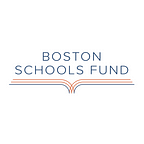With the American Rescue Plan, Boston Schools Have the Opportunity of a Lifetime
Five key values every decision-maker must consider as they build district plans for federal ESSER aid
By Will Austin
In April, President Biden announced a $1.8 trillion plan to support children and families, on the heels of stimulus checks back in February. But these checks weren’t deposited into the bank accounts of families: this stimulus check came in the form of an enormous investment in education to support the reopening of in-person learning and address the academic and social-emotional impacts of the pandemic.
How large is this check? On the national scale, the federal Elementary and Secondary School Emergency Relief Fund — ESSER, for short — is as much as the United States spent to rebuild Europe after World War II, when adjusted for inflation. Massachusetts has already received over $1 billion in ESSER funds that first became available last spring, with another $1.83 billion on its way from this latest round of federal aid. Boston alone is expected to receive close to $435 million in total ESSER funding, a third of its annual school budget.
In Boston, that works out to almost $9,000 more per student.
It’s the kind of windfall we’re not used to in education. With this influx of federal aid, the education funding debate isn’t about whether schools’ needs can be met, — rather, the $400 million dollar question Boston must now answer is exactly how should this money be spent?
As with other federal funding, school districts typically draw down federal funds through a granting process, with the state serving as a pass-through of sorts. Municipal leaders, school committees, and other stakeholders have a limited role — or sometimes no role at all. Superintendents and school district leaders can complete this with limited reporting requirements or active oversight.
This Thursday is the first meeting of the Return, Recover, Reimagine commission formed to “advise” Boston Public Schools Supt. Brenda Cassellius on where to direct investments. But critical gaps in representation remain across its 32-member appointments, most importantly a greater share of educator, family, and student representation, considering students are the direct beneficiaries of these dollars. The lack of any public health representation also raises some questions, given the bulk of “Return” efforts are focused on health and safety.
We owe children, families, and educators everything they need to recover what’s been lost and re-center on what matters. To do so requires an intentional approach to ensure this once-in-generation funding meets those needs.
Read the rest of this op-ed at Commonwealth Magazine.
About the Author
Will Austin is the CEO and founder of Boston Schools Fund.
